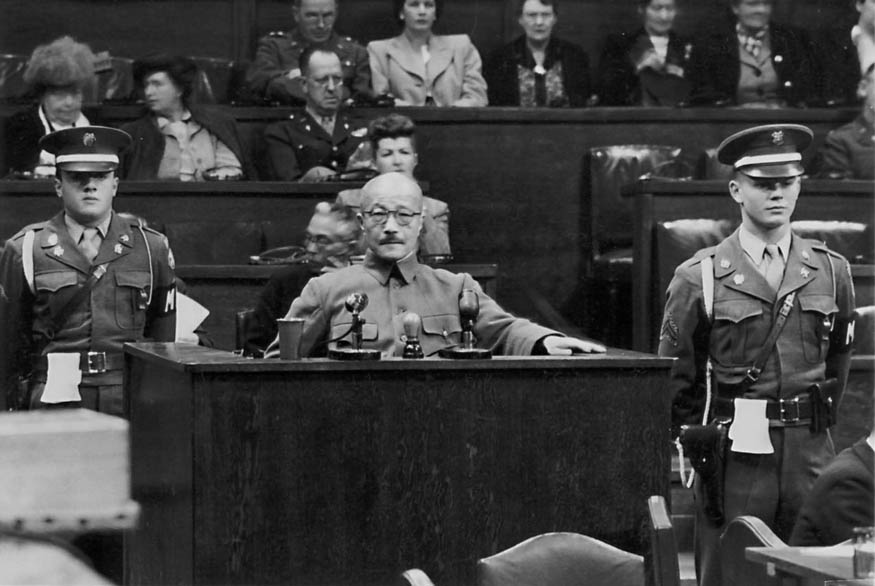FEBRUARY 23 2021 – Recently, I watched on Netflix the four-episode, historical drama, Tokyo Trial (2016). It’s the Pacific (war) Theater counterpart to Judgment at Nuremberg (1961) and mini-series Nuremberg (2000). A Japanese-Canadian co-production, Tokyo Trial was co-directed by a Dutchman and an American and filmed mostly in . . . Lithuania. Nominated for Best TV Movie/Mini-Series at the 2017 International Emmy Awards, this work is well-crafted—with one exception: terrible casting of Michael Ironside—the casting director was fooled by the name—as Gen. Douglas MacArthur, Supreme Commander of Japan after WW II. Hurdle that flaw, and you’ll find that Tokyo Trial forces you to contemplate the big arc of historical justice.
The production gets bonus points for high culture.
The music front features Fritz Kreisler (Liebeslied and Liebesfreud), Frederic Chopin (Ballade in g minor), and Cesar Franck (fourth movement of his sonata for violin and piano), and a few bars of Beethoven (Spring or Kreutzer sonata; not sure). Bert Röling, the movie’s main character—the Dutch jurist on the International Tribunal sitting in judgment of the 28 Japanese accused of war crimes—is an accomplished violinist. He teams up with the haughty but (deep-down) good-hearted, anti-fascist German pianist, Ute Schneider, who, in 1941 had been invited to concertize in Japan, where she remained for the duration of the war.
(Note to movie-makers: the violin is the hardest instrument to fake on film, so never put bow and violin into the hands of an actor. Use only headshots of the actor and hand-shots of an actual violinist, and instruct the actor not to swing his (cheap, consignment shop) violin case while carrying it.)
During the two-and-a-half-year legal proceedings, Röling befriends the famous Japanese writer, Michio Takeyama (Burma Harp), who provides penetrating insights and reminds us of the Van Gogh – Hiroshige connection.
The high drama, however, concerns a legal, moral, and ethical question: On what authority can victorious belligerents impose judgment on the vanquished? For the American, Russian, Chinese, Filipino, British, Canadian, Australian, and New Zealander jurists, the verdict—guilty as charged—is pre-determinable, based on the precedent of Nuremberg. Röling and his French and Indian counterparts, however, question the ex post facto legal basis for charging Japanese with the crime of “aggressive war.”
Dissenting opinions fall on deaf ears. The film viewer, however, is forced to listen. How can lines be drawn between what should be “legal” and what should be condemned in the conduct of . . . war, humanity’s greatest act of inhumanity? How do we distinguish between “acceptable” horrors and “unacceptable” atrocities? By degrees? By the influence of religious extremism (i.e. Emperor-worship in the case of Japan)?
In Nanking, 1,000 Chinese machine-gunned by Japanese was “an atrocity,” yet the incendiary bombing of Tokyo by Americans, killing 100,000 civilians in one night was “a strategic necessity,” and dropping two atomic bombs killing upwards of 250,000 was “the cost of shortening the war.”
Who, in the end, among our species has standing . . . to sit in judgment?
(Remember to subscribe to this blog and receive notifications of new posts by email.)
© 2021 by Eric Nilsson
